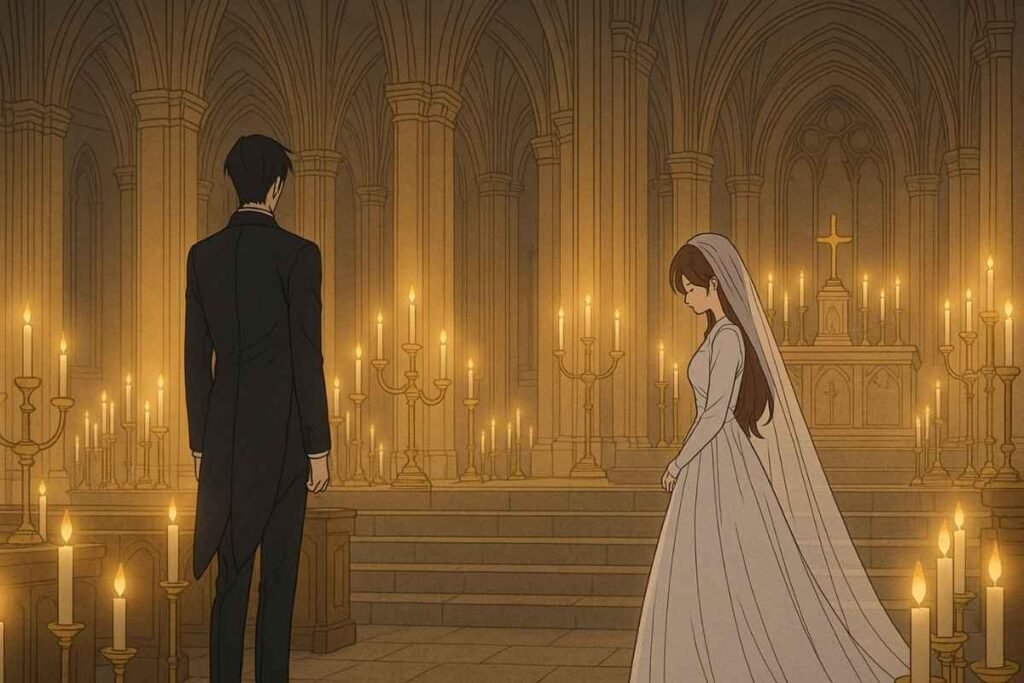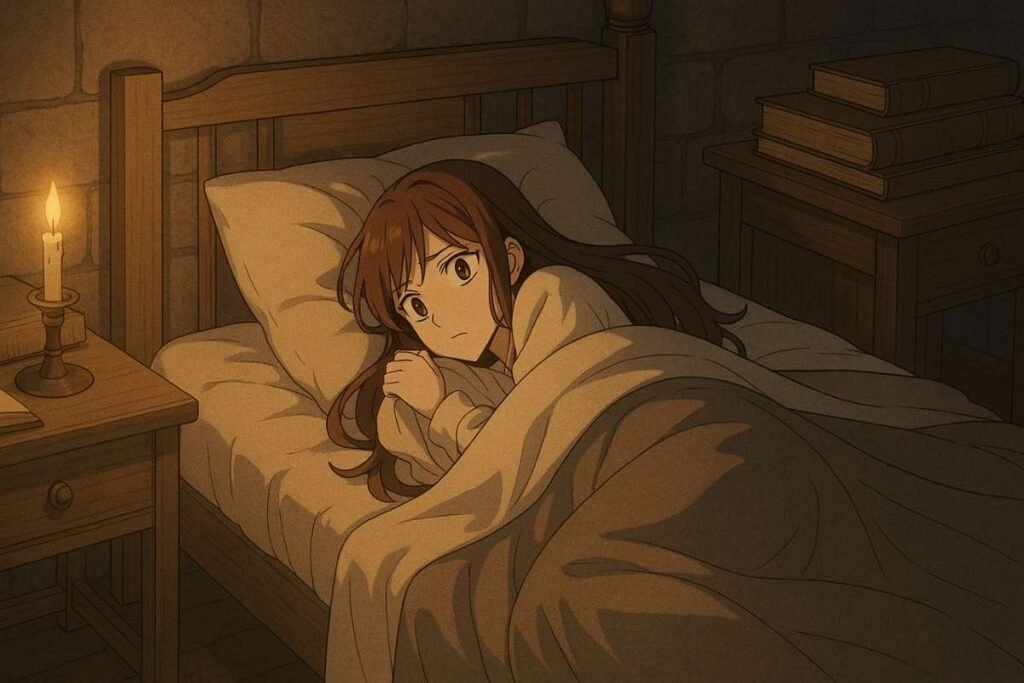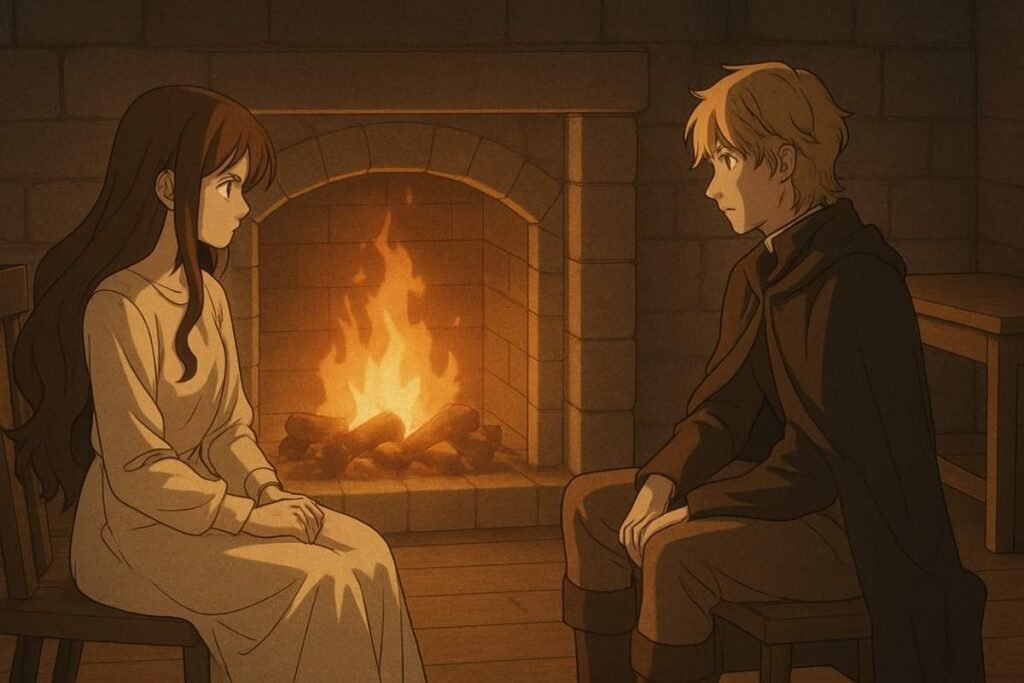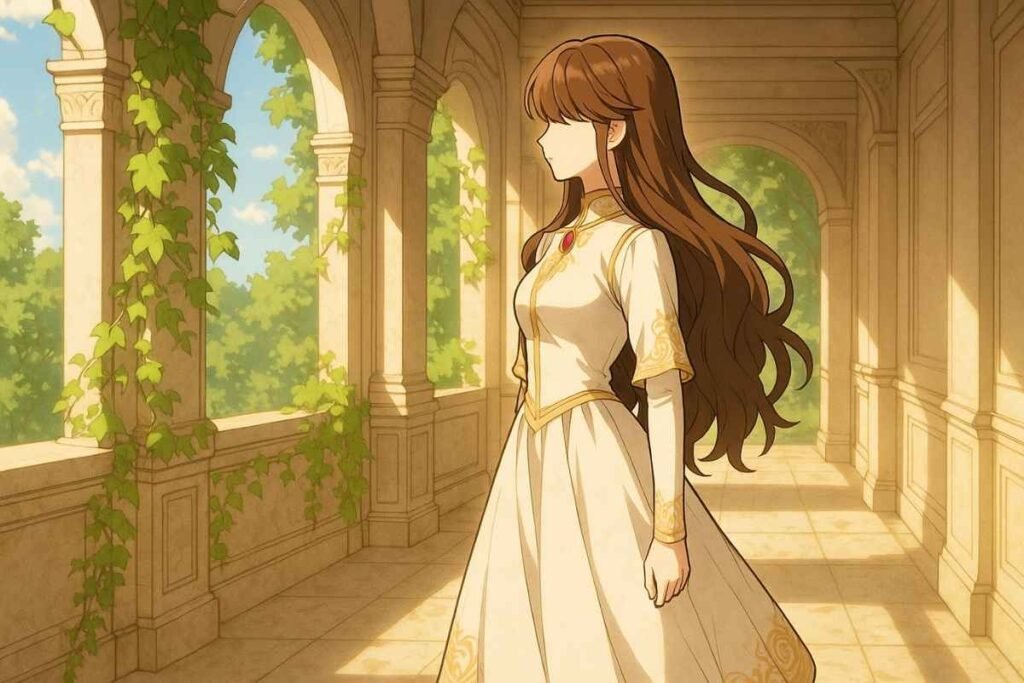At first glance, the title How to Get My Husband on My Side might sounded like a cheeky relationship guide to me. But fans of manhwa know better.
What unfolds to me was instead, it is a deeply layered story about a woman trying to survive in a world that has already cast her as the villain.
This is not a tale of charm or seduction in fact it is a story about healing from trauma, building trust and finding love in the most unlikely of places. This is my honest review about this manhwa called as How to Get My Husband on My Side.
The Premise: A Marriage Meant to Destroy Her

In a world where power trumps compassion, Rudbeckia is wed not for love, but as a sacrifice to seal her family’s downfall.
From Novel Villainess to Doomed Bride
The protagonist, Rudbeckia de Borgia, wakes up to find herself inside a fictional world specifically, a romance novel where her character is fated to die.
She is the evil noblewoman married off to the male lead, Iske van Omerta, a knight revered for his strength and feared for his coldness.
In the original novel, Rudbeckia is a footnote. In this life, she becomes the main character and she knows how the story ends.
A Desperate Strategy to Stay Alive
Unlike many transmigrated heroines who dream of glory, Rudbeckia just wants to survive. Her strategy is simple: if she can get her powerful husband on her side, she might just escape her brutal ending. But doing so is not easy. Iske does not trust her and the world around her wants her gone.
Rudbeckia: A Survivor, Not a Schemer

Trapped in a cruel narrative, she clings to hope, navigating danger not with cunning, but with quiet strength and a will to endure.
Fragile Yet Fierce
Rudbeckia is not your typical bold and brash isekai heroine. She is timid, cautious and visibly traumatized. But beneath her delicate demeanor lies a core of quiet resilience.
She may not wield swords or manipulate politics, but she makes the brave choice to keep going, even when everything in her life screams at her to give up.
Trauma Portrayed with Care
What makes Rudbeckia’s story resonate so deeply is the authentic portrayal of trauma. She flinches at loud voices, fears physical contact and has a painfully realistic fear of abandonment. The manhwa never rushes her healing but it lets us sit with her discomfort and root for her incremental growth.
Iske van Omerta: The Cold Knight with Layers
Behind the stoic armor lies a man torn between duty and emotion, slowly unraveling in the presence of a woman he was never meant to love.
Not Your Average Male Lead
At first, Iske is cold, formal and seemingly indifferent. He treats Rudbeckia like a political obligation and their marriage feels more like a contract than a relationship. But as the story progresses, cracks begin to form in his icy exterior.
Learning to See Her
Iske’s growth is slow and believable. He does not fall for Rudbeckia overnight but instead, he learns to see her as a human being, notices her silence, her small efforts and her pain.
Eventually, he moves from tolerance to quiet protection. For me it was not about grand gestures, but about presence, patience and emotional availability that his character shows.
Romance Built on Trust, Not Tropes

The love between them doesn’t spark from passion, but from patience, empathy and the quiet courage to see each other’s pain.
The Art of the Slow Burn
If you are looking for whirlwind romance, this is not the story for you. But if you value emotional depth, How to Get My Husband on My Side delivers in spades.
The romance between Rudbeckia and Iske is carefully earned. It grows through daily routines, small kindnesses and a shared sense of isolation.
Love as Safety, Not Fireworks
The most powerful moments in their relationship are the ones where Rudbeckia starts to feel safe. She learns to speak without fear, to rest without suspicion. And Iske becomes a man who listens and when it say listen, it means really listens. Their love doesn’t explode but it settles.
Themes That Set This Manhwa Apart
This story goes beyond fantasy romance, diving into trauma, emotional resilience and the quiet power of healing through connection.
Survival Over Heroism
This is not a girl boss story. It is about emotional survival in a cruel world. Rudbeckia does not fight back with power but she navigates carefully, avoids unnecessary conflict and tries to make space for peace. That might seem passive, but it is actually a radical act of self preservation.
Healing Isn’t Linear
The narrative does not treat healing like a straight line. Rudbeckia has bad days, she regresses and doubts herself. But the story does not punish her for it instead, it shows that healing is messy, emotional and deeply personal.
A Marriage That Redefines Romance
The marriage starts as a trap, but becomes a safe haven. Through their evolving dynamic, the story asks a powerful question: What if love wasn’t about passion, but about understanding?
Side Characters: Reflections of a Harsh World
Every supporting figure mirrors the cold reality Rudbeckia faces, some deepen her wounds, while others slowly help her heal.
Freya: A Jealous Heroine?
The original female lead, Freya, sees Rudbeckia as an obstacle. She is not a caricature but she is a young woman who expected a fairy tale and doesn’t know how to share the spotlight. Her resentment, while toxic, feels painfully human.
Allies in Unexpected Places
As Rudbeckia begins to break through Iske’s shell, others around her begin to shift too. Characters like Iske’s sister and the palace servants start to see her not as a Borgia, but as Rudbeckia the person that is kind, gentle and trying her best.
Art and Atmosphere: Subtle, Expressive and Haunting

Visually, this manhwa excels at emotional storytelling. The art captures nuance like downcast eyes, trembling hands, the quiet intimacy of two people sitting in silence.
The colors are soft, often muted, which mirrors the story’s emotional tone. Each panel feels purposeful. There is no visual clutter, just space for emotions to land.
Reader Reception: Why It Stands Out
Praised for its emotional depth and slow burn romance, the manhwa captivates readers seeking sincerity over clichés.
What Readers Love
- A unique take on Otome Isekai
- The emotional realism of Rudbeckia’s journey
- The incredibly slow burn romance that feels earned
Criticisms to Consider
- The early chapters can feel slow for readers used to action heavy plots
- Rudbeckia’s passivity may frustrate fans of stronger willed heroines
But for many, these elements are exactly why the story resonates. It is not trying to be flashy but in fact it is trying to be honest.
Final Thoughts
How to Get My Husband on My Side doesn’t scream for your attention but in reality it whispers and those who stay to listen will find themselves deeply moved.
It is a story about fear, love, trust and the bravery it takes to simply exist in a world that wants to break you. For readers craving emotional authenticity and beautifully flawed characters, this manhwa offers something unforgettable. I hope this has made you want to read this wonderful novel, best of luck.
FAQs
What genre is How to Get My Husband on My Side?
It belongs to the Otome Isekai, fantasy, romance and psychological drama genre.
Is the manhwa completed?
As of July 2025, the manhwa is ongoing, while the original web novel is completed.
What is Otome Isekai?
Otome Isekai is a genre where a heroine is reborn into a fantasy romance world, often as a villainess, seeking love, survival and a second chance at destiny.
How does the romance between Rudbeckia and Iske develop?
It is a slow burn, evolving from fear to cautious trust and eventually into deep, meaningful love based on emotional growth and shared vulnerability.
What makes Rudbeckia’s character unique?
Her realism. She grows not by becoming powerful but by reclaiming her self worth and learning to trust again.
Where can I read How to Get My Husband on My Side?
You can read the manhwa on platforms like Tapas, Tappytoon or Webtoon, depending on your region. The web novel is also available in fan translations and select licensed editions.









